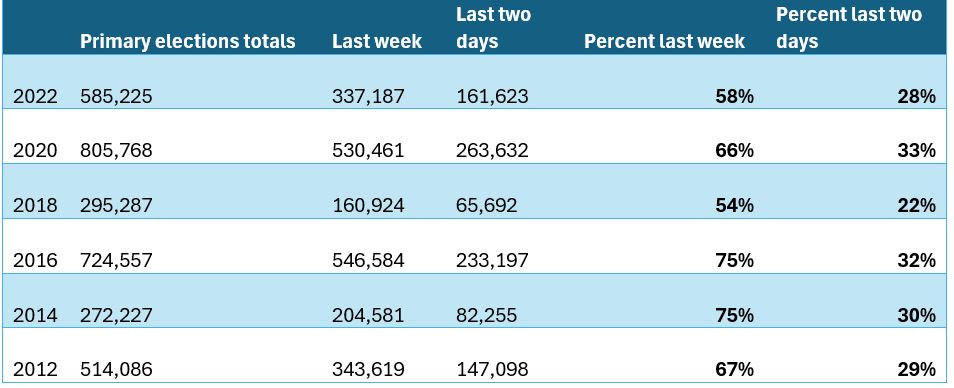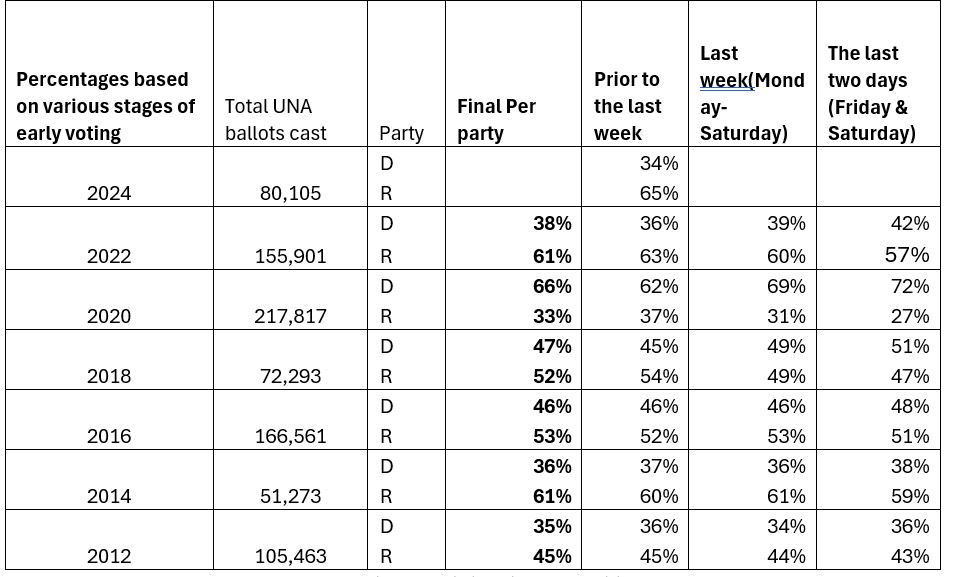North Carolina has started its final week of early voting, and with it, we should see a substantial increase in the number of ballots being accepted. This pattern is typically seen in early voting but is more prevalent in primary elections.
Since 2012, the last week of early voting during presidential election years sees more than 66% of all early ballots being cast during the final week. That number can drop as low as 54% during midterm elections, as it did in 2018. The ramp-up in voter participation culminates in the highest voter turnout coming in the final two days of early voting.

Table 1, North Carolina early voting numbers.
One notable detail in this year’s early voting has been the substantial increase in Republican ballot requests. This is from an increase in registered Republicans voting during the first two weeks of early voting and unaffiliated voters opting to request Republican ballots at a two-to-one ratio over Democratic ballots. This has led the first time Republicans have led in the number of ballots requested over Democrats during early voting. I’ve been asked frequently during this year’s early voting whether it is abnormal for unaffiliated to favor Republican ballots.
Utilizing the John Locke Foundations Vote Tracker page, we compiled data on North Carolina early voting participation, ballot requests for both major parties, and unaffiliated voters’ ballot request trends. An Excel list of the data can be found here.
While unaffiliated voters typically favor Republicans, the only exception to this being 2020, it has never been quite to this extent. While this is a good thing for Republicans, as we go through early voting, unaffiliateds typically move slightly more toward Democrats in the last week, especially during the last two days of early voting.
Though the Republican’s lead will likely shrink over the final week of early voting, unaffiliated will likely still favor Republican primary ballots overall during early voting.

Table 2, early voting participation Unaffiliated voters.
While Republicans will likely view the higher participation in early voting from both Registered Republicans and unaffiliateds as a good sign for their prospects in the Fall, they should remember this is not indicative of the results of the November general election. The voters in a primary election are a small portion of general election voters. This is especially true during Presidential election years. Higher turnout during a primary election indicates a party’s political base being engaged more than anything else.
